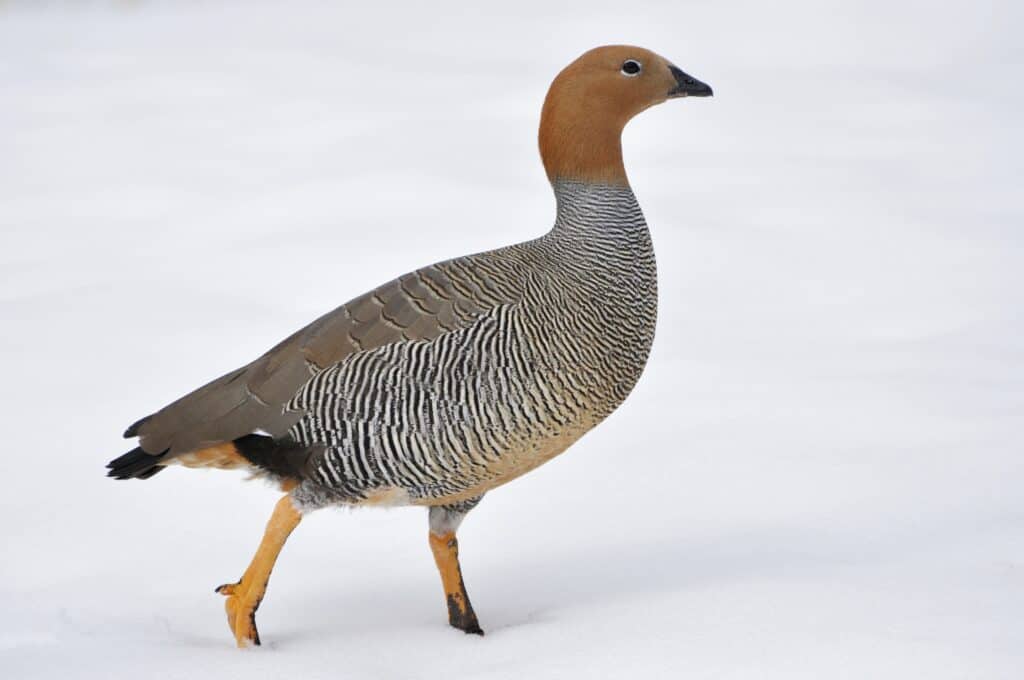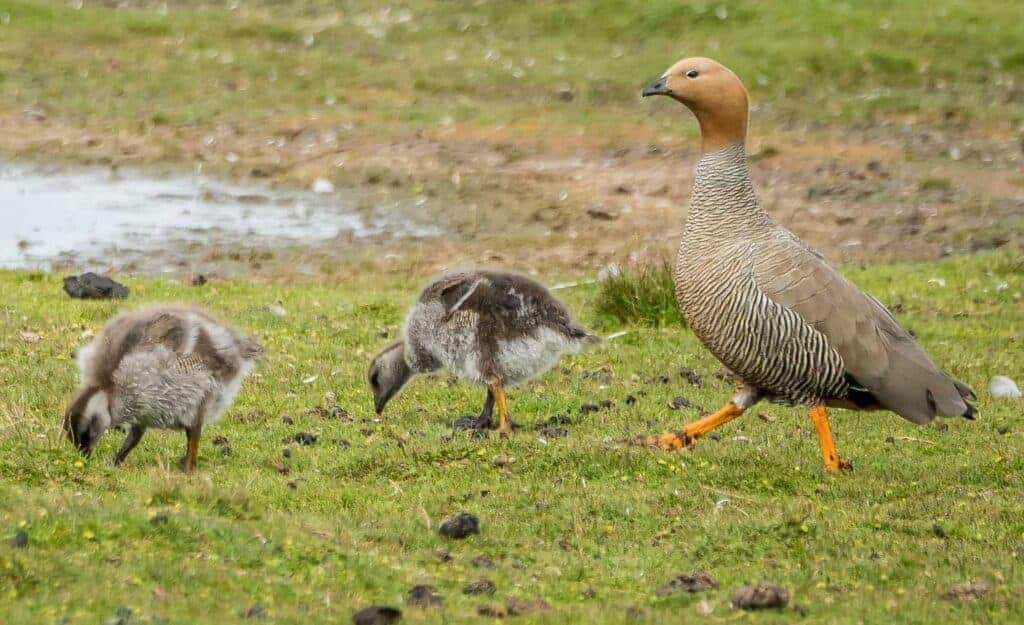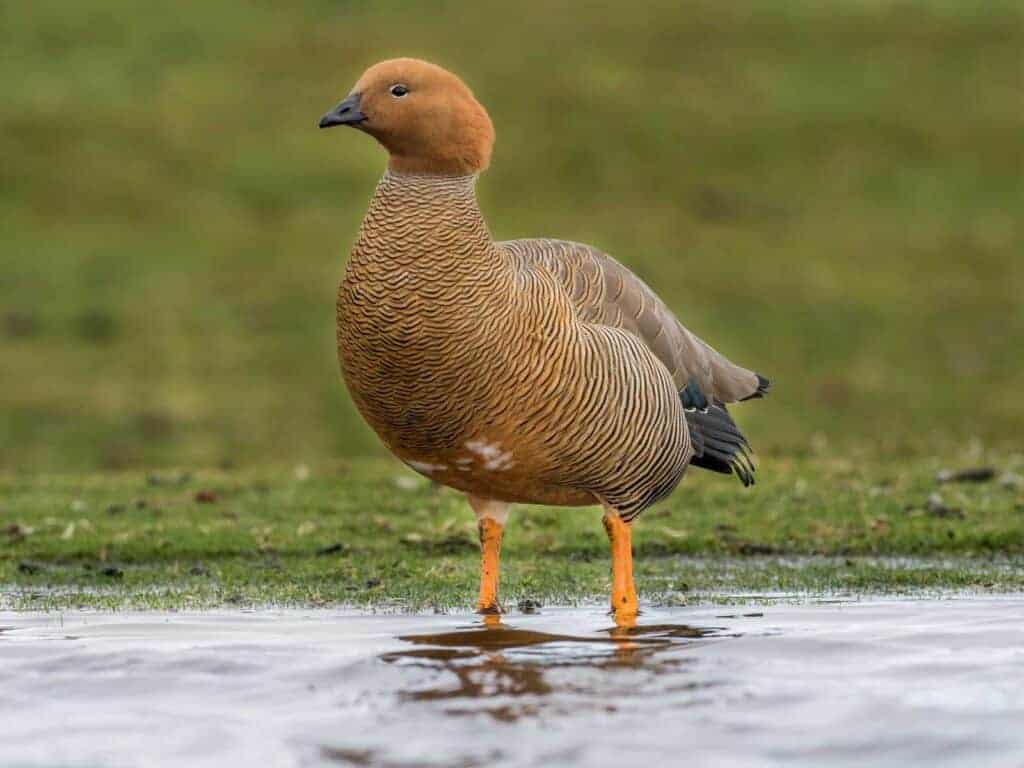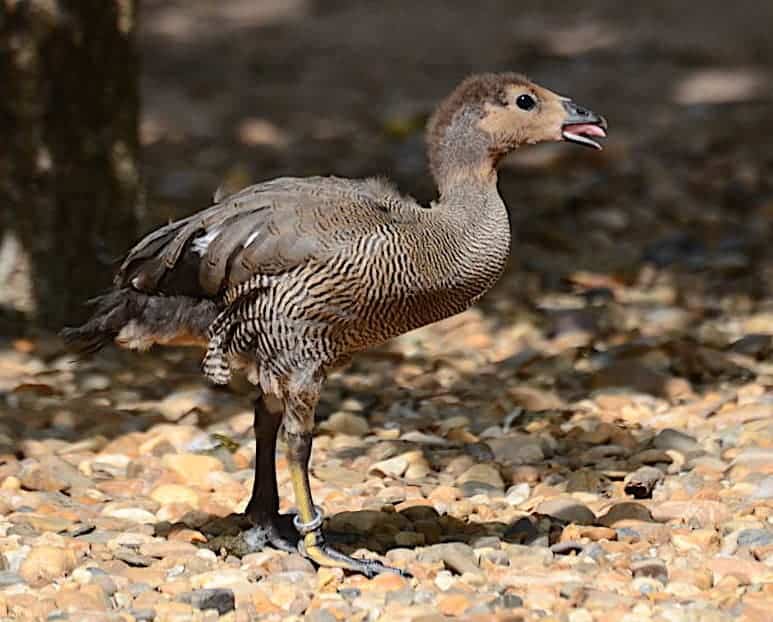Ruddy-headed Goose

Recent studies have shown that the mainland and Falkland Island populations of the Ruddy-headed Goose are genetically distinct, making a strong case for a species split. Because of the size of the Falklands population, this goose is listed as of Least Concern, though the South American population would qualify as being Endangered.
Chloephaga rubidiceps
The Ruddy-headed Goose is similar in shape, habitat preference and behaviour to its close cousin, the Ashy-headed Goose. It can also be found in Argentina, breeding in Tierra del Fuego and southern Patagonia and wintering on grasslands to the south of Buenos Aires. It is, however, a rare and endangered bird in Argentina but not so in the Falklands, where there is a sizeable resident population.


Slightly smaller than the Ashy-headed Goose, both sexes share the same plumage. Somewhat confusingly, they look very much like the female Upland Goose, from which they are best distinguished by their smaller size and ruddy, rather than dark, under-tail covets. On the Falkland Islands the two species can be found in the same habitat, and occasionally in mixed flocks.

The Ruddy-headed Goose is not an easy species to maintain in aviculture. Like most of the sheldgeese and shelducks, males are often extremely aggressive during the breeding season when they are defending a nesting territory. The clutch of 5-8 eggs is usually well hidden in long grass or rushes, often in an old Megallanic Penguin burrow. The goslings hatch after 30 days, and both parents attend the young.
Share this page